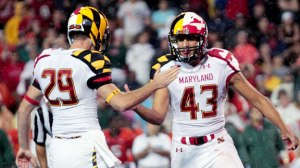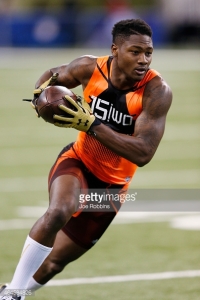
Anybody who knows Maryland Football, knows who Stefon Diggs is. Coming in as a freshmen, Diggs was a stud. There was much talk about him before he arrived to the University of Maryland. Many were surprised he decided to attend a university closer to home rather than go to a successfully known football institution. During his time here, Diggs broke records. He was honorable mention by the ACC both his freshmen and sophomore year. His junior year, despite many injuries he acquired previously, including a season-ending injury at Wake Forest his sophomore year, he came back stronger than ever. He was All-Big Ten Second Team, nominated by coaches, and also All-Big Ten Honorable Mention, nominated by the media. As a junior he also led the team in receptions, receiving yards and also receiving touchdowns (UMTerps.com).
Sounds like a pretty great career so far right? Well, this basically sums up his college career, because at the end of last season (Fall 2014), Diggs announced that he is going to enter the NFL (National Football League) draft, and was invited to attend the NFL Combine. The combine is known as a national invitation camp where top executives, coaching staff, player personnel and medical professional from all 32 NFL teams scout the potential collegiate athletes for the upcoming NFL draft (NFL Scouting Combine).
Most people would agree that going professional is an athletes ultimate dream. Not many get the opportunity to go through what these athletes do. But think about it…. Diggs was a junior in standing for the university when he declared he was going to go for the NFL draft, meaning that he left college to pressure his professional career. So yes, Stefan Diggs may be living his dream right now, but what if he gets hurt again and can not longer perform professionally? He would have no education to fall back on. Diggs technically “dropped out” of the University of Maryland to pursue his professional football career, so he never actually got a degree. Thats two and a half years of education at Maryland wasted and unfinished. If there was some way that Diggs could be compensated for his athletic ability while still earning an education, he may have continue his education while pursuing his football career. If student athletes would be compensated for their athletic ability, the students could pursue their education while practicing the sport, according to NCAA standards. That way they would be able to earn a degree while still being paid for their athletic abilities. All in all, the university would still profit much better if athletes like Stefon Diggs stayed and finished out his degree because that would mean universities could compete at the highest level of competition, with the best of the best athletes around.
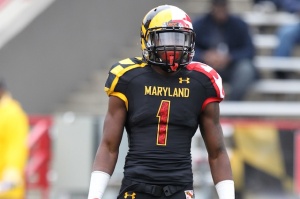
Citation: “Stefon Diggs Biography.” Umterps.com. University of Maryland, n.d. Web. 05 Mar. 2015.
“Home.” NFL Combine. N.p., 2014. Web. 05 Mar. 2015.
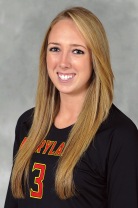 Hi! I’m Kelsey Hrebenach, communications major and a student-athlete at the University of Maryland.
Hi! I’m Kelsey Hrebenach, communications major and a student-athlete at the University of Maryland.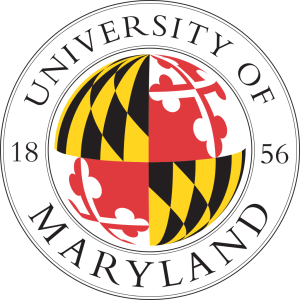
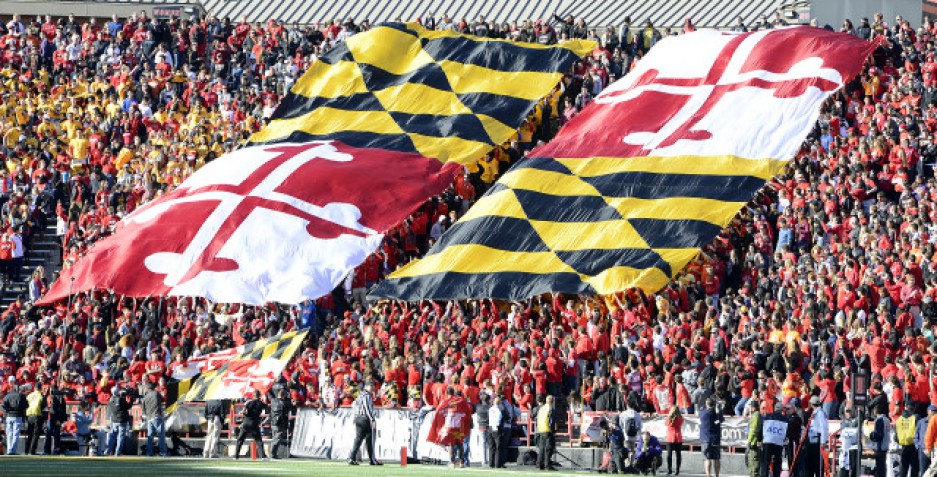
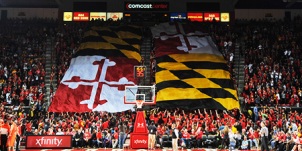
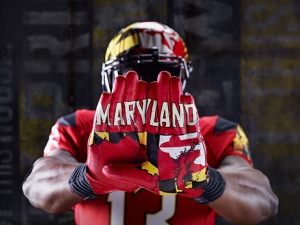 antages of things when viewing somebody. Hardly ever do they think about the disadvantages of that persons life. We are all at fault for it. One of those faults is that some students at the UMD mostly only see the advantages of what it is like to be a student-athlete on campus, and not any of the disadvantages.
antages of things when viewing somebody. Hardly ever do they think about the disadvantages of that persons life. We are all at fault for it. One of those faults is that some students at the UMD mostly only see the advantages of what it is like to be a student-athlete on campus, and not any of the disadvantages.